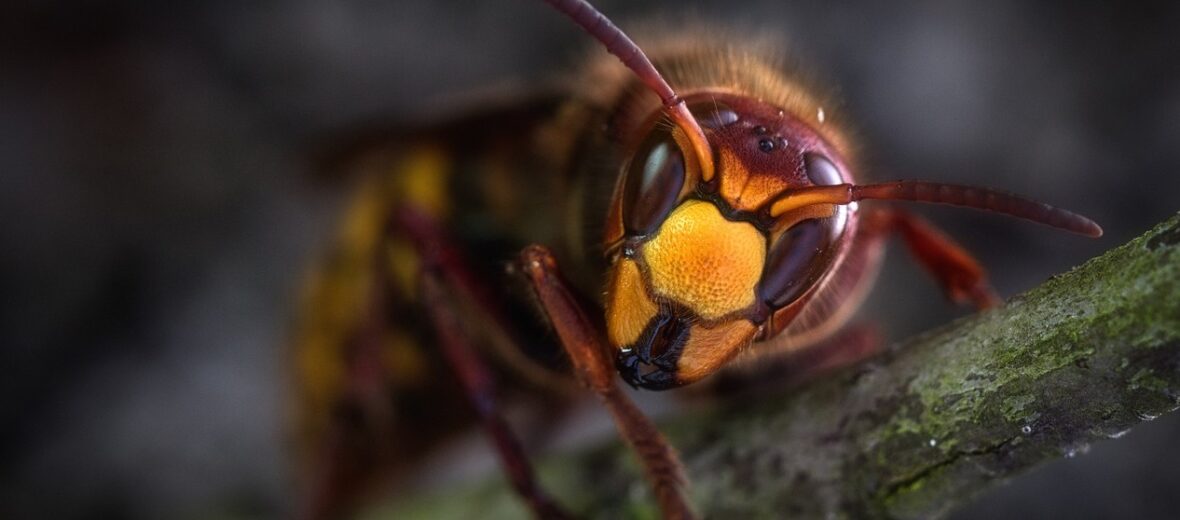
There are more than 20 known species of hornets found in Africa, Asia, Europe, and right here in North America. The hornet lives in both forested and rural regions. Hornets are basically a predatory wasp. These insects are termed as pests in most parts of the world due to their ability to kill honeybees and destroy commercially viable fruit. Here we will be talking about European and North American hornets. I also wrote an article about the defensive Japanese giant hornet.
First the Stats…
Scientific name: Vespa
Length: Up to 2 inches
Wingspan: Up to 3 inches
Lifespan: Up to 1 year
Now on to the Facts!
1.) It is not widely known that hornets aren’t exactly angry all the time; looking to sting you at the first glance. They typically only sting in self defense or if they think you’re trying to intrude on their nest. The trouble is that their nest’s safety boundaries can be up to 2 miles. So there’s that.
2.) Hornets actually belong to family of insects called Vespidae. This family has each known species of hornets plus wasps, like potter wasps, paper wasps, yellow jackets, and pollen wasps.
3.) Hornets can be both nocturnal (active at night) and diurnal (active during the day).
4.) Hornets typically build their nests above ground, but there are a few species that prefer their nests be on the ground.
5.) Hornets primarily eat fruit, tree sap, and various insects. Bees, however, are their favorite food.
But wait, there’s more on the hornet!
6.) When searching for food, like bees, the scouts will locate a hive and then leave a pheromone trail for other hornets to follow. Then the havoc ensues.
7.) Their young survive off of protein which the workers find in the form of insects and other critters. In return, the larvae produce a sweet syrup which the adults drink. This vomit is called vespa amino acid mixture (VAAM). Mmmm, baby barf.
Did you know…?
Hornet stings are more painful to humans than typical wasp stings because hornet venom contains a large amount (5%) of a chemical called acetylcholine. Acetylcholine causes harm by inactivating or hyperactivating muscles via their influences on the neuromuscular junction. Oooh, big words. Basically, a large enough dose of this venom can cause paralysis, hypertension, and even death.
8.) Hornets release more venom per sting than any other stinging insect.
9.) Hornets who build their nests in the trees usually make football-shaped nests. The nests are made out of hornet spit and chewed wood. They have a brittle, paper-like texture. Ground nesting hornets typically dig burrows.
10.) At the end of her life, the queen will lay a mass of fertilized eggs that develop into a new generation of queens and a mass of unfertilized eggs that develop into drones. Drones die soon after fertilization. Workers live from spring – summer. The queen completes her life cycle in just 1 year.
Now a Short Hornet Video!
Also, check out the Critter Science YouTube channel. Videos added frequently!
Want to suggest a critter for me to write about? Let me know here.




Leave a Reply